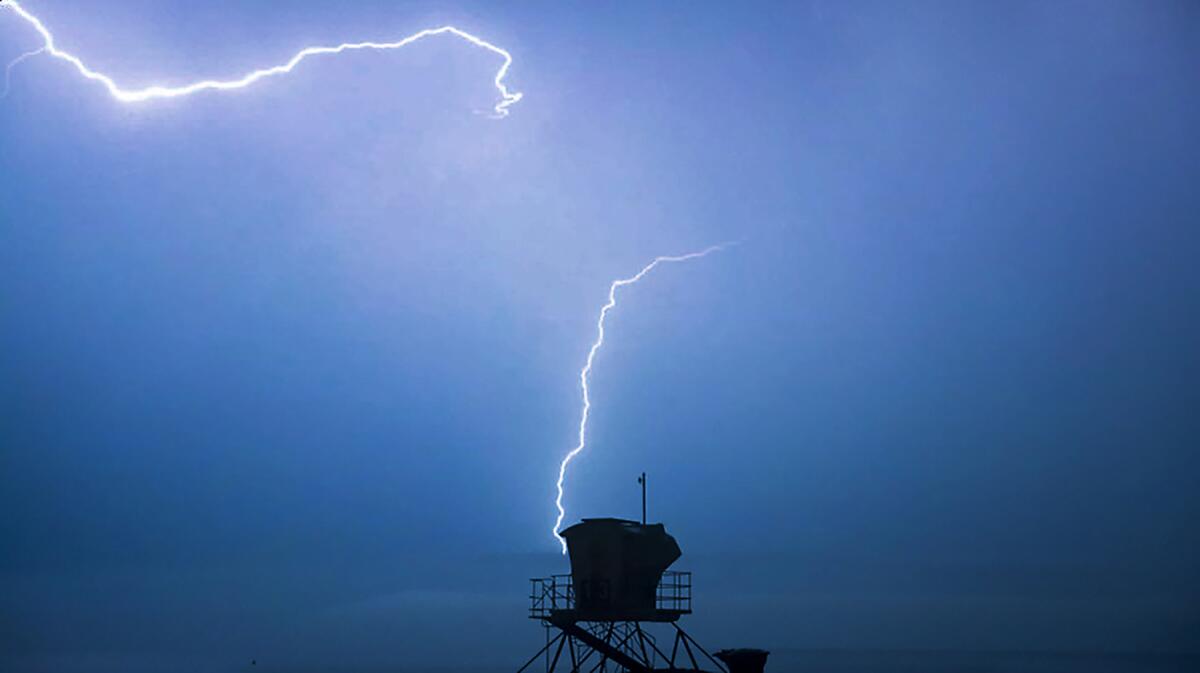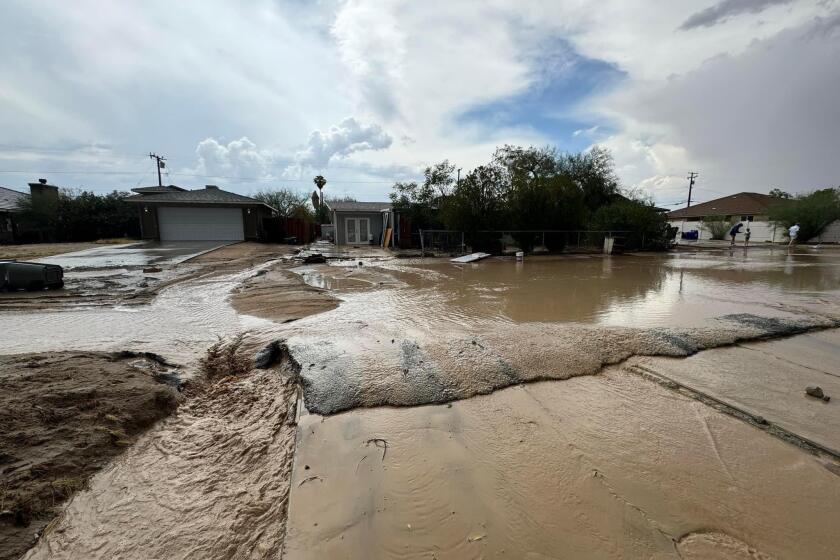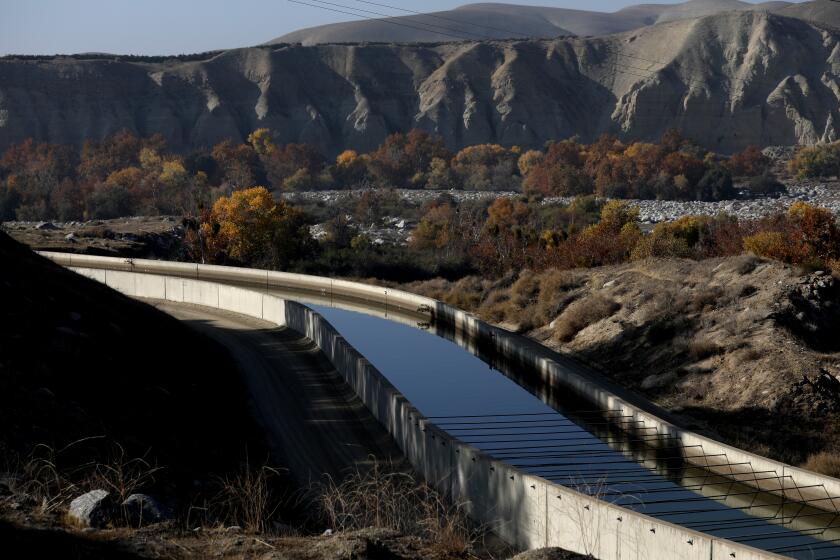Thunderstorms briefly cool Southern California’s heat wave but spark new wildfires

- Share via
Thunderstorms from Southern California’s monsoon season brought a temporary cooling reprieve over the weekend to a region that had been baking under a triple-digit heat wave but also sparked new wildfires.
A marine layer is cooling off coastal regions this week, said National Weather Service meteorologist Robbie Munroe. Southern California can expect a “strong temperature divide from coastal areas to valleys to interior” areas, he added.
Closer to the ocean, highs are expect to range from the upper 60s to 70 degrees, while landlocked areas such as downtown Los Angeles will reach about 80 and the San Fernando Valley is forecast to be closer to 90.
The weekend thunderstorms also sparked fires across Southern California, said Brent Pascua, the battalion chief of the California Department of Forestry and Fire Protection’s Sacramento station. Kern County fire crews are battling five fires across 17,915 acres, four of which started Saturday.
“The White fire is caused [by lightning], and the Rancho fire is suspected to be lightning,” Pascua said. A portion of Interstate 5 had been shut down near Lost Hills in Kern County, but has since reopened to commuters, he added.
The National Weather Service issued a flash flood warning Monday afternoon as thunderstorms posed a threat to rural Riverside County.
One small fire in Riverside was swiftly extinguished due to the dampened conditions. “It was so small that it didn’t register as even an acre,” Pascua said.
Southern California can expect another heat wave starting this weekend, Munroe said. In landlocked valleys, people might see temperatures rise past 100 degrees. He warned that the confluence of that heat and another thunderstorm forecast for this weekend might ignite more wildfires.
“Anytime you have thunderstorms, there’s at least a small chance of fire starts,” Munroe said. “Even in relatively wet thunderstorms, sometimes lightning will strike outside of the thunderstorms where it’s been relatively dry.”
The increased danger of heat waves is not occurring equally in all regions — in the hot, dry conditions of the Southwestern U.S., heat wave intensity and frequency is increasing particularly rapidly.
Firefighters across the state are on high alert, anticipating the upcoming weather conditions and fire threats. “Lightning strikes could be hiding for days until they actually pop up and become a major fire,” Pascua said.
This year’s wildfire season has already razed near 220,000 acres, 20 times the amount of acreage that was aflame this time last year. Thousands have evacuated their homes, dozens of buildings have been damaged, and at least one resident has been killed by wildfires across California.
“Both Southern and Northern California have a lot of unburned fuel from all the rain and precipitation we got over the winter,” Pascua said. “Also, the last couple years, we haven’t had a very active fire season, so there’s a lot of available fuel. The potential to have these big fires is real.”
The largest of the current blazes — the Lake fire in Santa Barbara County — is now at 34% containment. An email update Monday morning from Cal Fire said that improved weather conditions decreased fire activity overnight on Sunday. But the fire has charred more than 38,000 acres, and the nearby Los Padres National Forest has increased closures that will remain in effect until mid-August.
Cal Fire has assigned an incident team to the 11,000-acre Shelley fire in Sikiyou County. After two weeks, firefighters have been able to contain only 3% of the total acreage affected.
“Getting crews in and out continues to be a struggle,” Pascua said of the rural area. Crews either have to be flown in or walk for hours before they reach the fire line.
Amid extreme heat, California officials adopted water-saving rules for cities — a decision that sparked debate about whether the measures go far enough.
Those long treks for crews through mountainous and remote regions to battle fires is made even more dangerous by the unprecedented levels of extreme heat. The weather service issued a heat advisory for the San Francisco Bay Area on Saturday as temperatures climbed above 100 degrees. Sacramento officials also reported that the first two weeks of July were the hottest on record for the city in the last 146 years.
“We’re always training so that when these heat waves hit during the summer we’re prepared,” Pascua said of first responders.
Pascua warned California residents also to be prepared for a summer of heat and fire.
“Have that emergency plan figured out with your family,” Pascua said. “That way when the evacuation [order] comes out for a fire or an emergency, you can leave early ... and we can get in there and provide the offense to try and put these fires out.”
More to Read
Sign up for Essential California
The most important California stories and recommendations in your inbox every morning.
You may occasionally receive promotional content from the Los Angeles Times.














